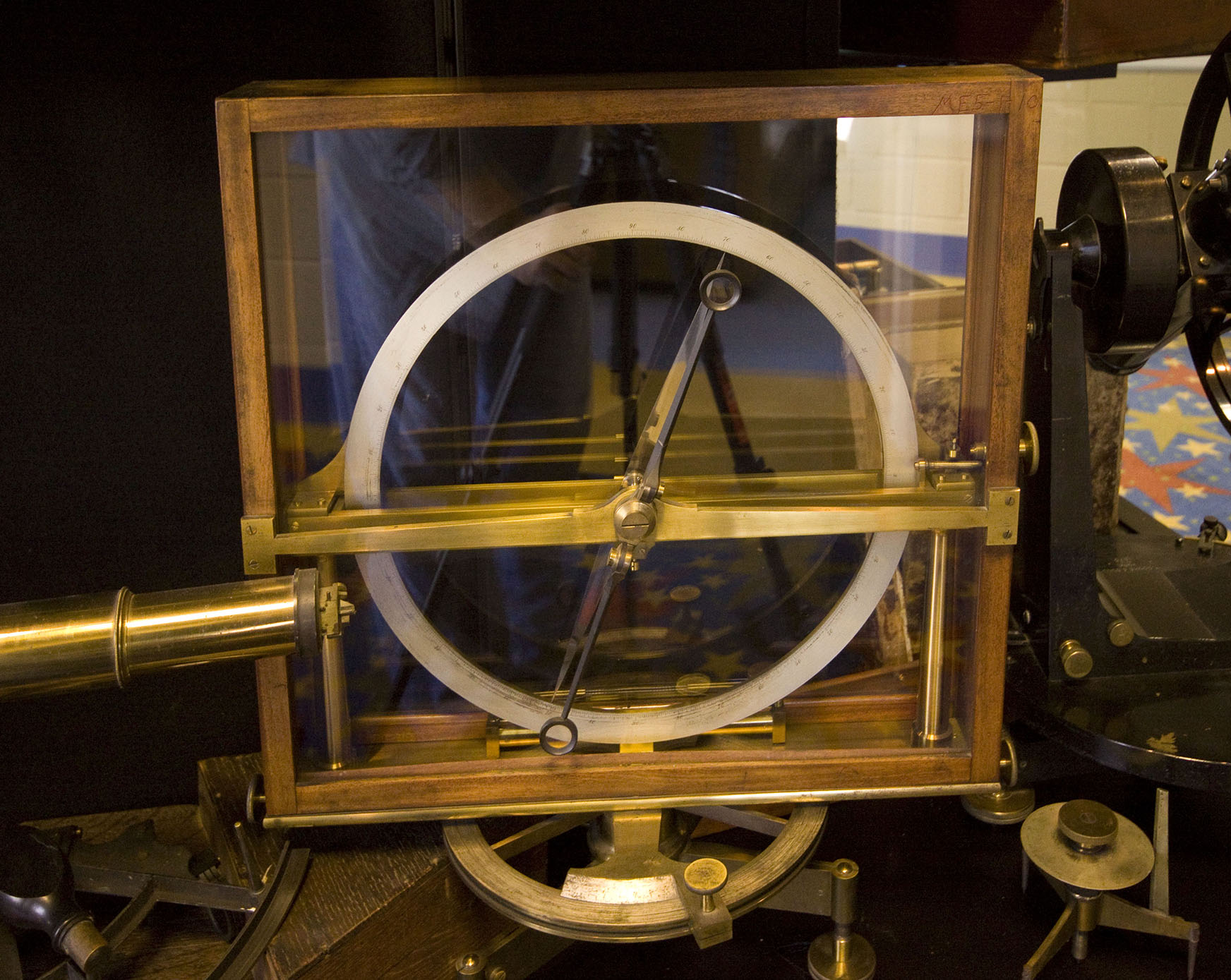When entering Vanderbilt Dyer Observatory, one of the first things noticed is the large display case in the front lobby. Behind its glass, you will find artifacts dating back to the 1870s that reflect the history of astronomy at Vanderbilt University, including Vanderbilt’s Dyer Observatory. The majority of the exhibit is comprised of what is referred to as the Garland Collection. Vanderbilt University’s first chancellor, Landon Garland, acquired these instruments in the early 1870s while traveling through Europe. They would become the equipment used in the first physics and astronomy courses at Vanderbilt University. Dyer Observatory houses much of the astronomy equipment, while the Stevenson Science Center on the main Vanderbilt campus houses many more display cases with the rest of the collection. The Cooke Telescope, Vanderbilt’s first telescope that was originally housed in the Barnard Observatory, is also part of the collection and is currently on display at the Dyer Observatory Residence.
One of the instruments in this collection is a inclination compass. This compass allows one to measure the perpendicular orientation of the Earth’s magnetic field at a given location. Regular navigational compasses indicate direction to the Earth’s magnetic poles with needles that are held parallel to the Earth’s surface. The Earth’s magnetic field, however, is typically not oriented strictly parallel to the surface. Thus, the Earth’s magnetic field exerts a force perpendicular to regular compass needles, the amount of which is dependent on the observer’s location, causing the needles to be pushed down or pulled up. The silver ring in the above image is graduated with degree markings, all of which are mounted within the wooden case with large glass windows. Mounted on the outside is an arm with a small lens at each end, which permits the user to view the very small graduations more easily and accurately. Mounted within the silver ring is the freely rotating double-ended needle, which can be seen just behind the lens arm.
<- Previous April 21, 2020 Next ->
Tucked up among the wooded hilltops of northern Brentwood, Vanderbilt Dyer Observatory is considered by many to be a hidden treasure of the area. Visitors to our satellite campus not only learn about some of the cutting-edge discoveries and science in astronomy but they also get a dose of nature, history, and many other things while here. Over the years, we at Dyer Observatory have made the preservation of our facility and grounds a key mission. Preservation not only entails things such as maintaining our telescopes — it also includes keeping a record of days passed. Since 1953, we have amassed a number of interesting images, pieces of equipment, and ephemera. Every day tends to bring new surprises. In continuing our tradition of public education and outreach, Stellar Finds regularly provides an image and description of the diverse paraphernalia associated with Vanderbilt Dyer Observatory and the history of astronomy at Vanderbilt University.
